Choosing the right pistol involves considering various factors to ensure it meets your needs for self-defense, sport shooting, or recreational use. With a wide range of options available in the market, understanding key features, considerations, and your own preferences will help you make an informed decision. This guide outlines everything you need to know about selecting the perfect pistol.
Introduction
Pistols are versatile firearms designed for personal protection, target shooting, and law enforcement. Whether you’re a first-time buyer or looking to upgrade your current pistol, understanding the selection process is crucial. This article aims to provide a comprehensive guide on how to choose a pistol that aligns with your requirements and preferences.
1. Understanding Pistol Types Before Choosing A Pistol
Pistols come in various types, each with unique characteristics and applications. The main types include:
- Semi-automatic Pistols: These pistols use a magazine to feed cartridges into the chamber automatically after each shot. They are popular for their ease of use, higher magazine capacity, and faster reload times.
- Revolvers: Revolvers use a rotating cylinder to hold cartridges. They are known for their reliability, simplicity, and ability to handle more powerful cartridges. Revolvers are often chosen for their robustness and suitability for self-defense.
Example: If you prioritize simplicity and reliability, a revolver like the .32 Revolver Thunder Combat Pro, known for its durability and accuracy, might be suitable. On the other hand, if you prefer a higher capacity and faster shooting, a semi-automatic pistol such as the .32 Pistol Brahmastra, favored for its reliability and ease of use, could be a better fit.
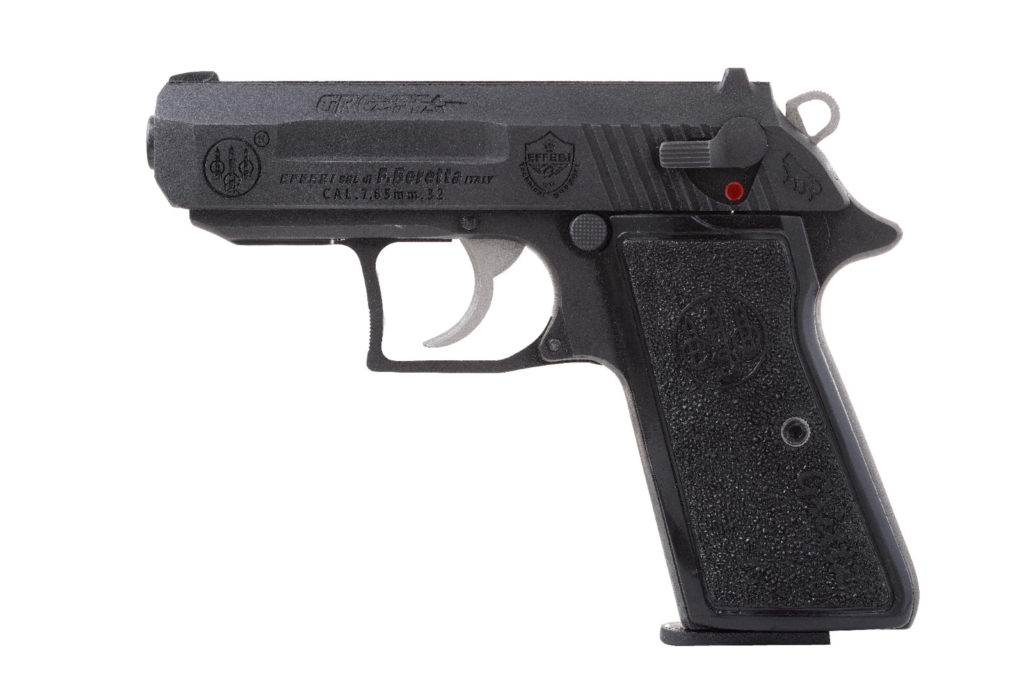
2. Considerations Based on Intended Use Of Pistol
Your intended use for the pistol will heavily influence your choice. Consider these factors:
- Self-Defense: For personal protection, factors like size, weight, ease of concealment, and reliability are crucial.
- Target Shooting: Accuracy, ergonomics, trigger quality, and sights become more important for hitting targets consistently.
- Competition: Pistols designed for competitive shooting often prioritize features like adjustable sights, lightweight frames, and enhanced trigger control.
Example: If you plan to use the pistol primarily for home defense, a compact and reliable option like the .32 caliber Pistol Defender, known for its modular design and ease of use under stress, could be ideal. Conversely, if you’re a competitive shooter, a specialized pistol like the CZ Shadow 2, celebrated for its accuracy and ergonomic grip, might be more suitable.
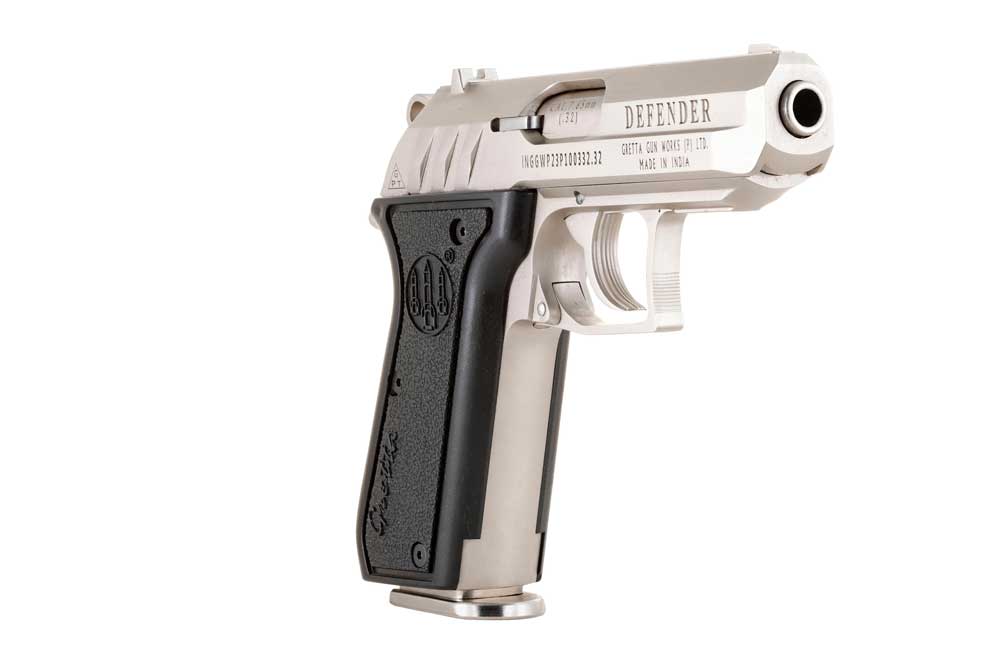
.32 Defender
3. Ergonomics and Comfort
The pistol should feel comfortable and natural in your hands. Consider these ergonomic factors:
- Grip Size and Shape: A grip that fits your hand size comfortably improves shooting accuracy and control.
- Weight Distribution: Balance between weight and distribution affects how the pistol handles recoil and overall stability.
- Trigger Reach and Control: A smooth and consistent trigger pull is essential for accurate shooting. Ensure the trigger reach fits your finger comfortably.
Example: For shooters with smaller hands, pistols with adjustable backstraps like the Walther PPQ M2, offering customizable grip sizes and ergonomic controls, can provide a more comfortable shooting experience. For larger-handed shooters, models with extended grips and longer trigger pulls, such as the H&K VP9, known for its intuitive design and ergonomic features, may be preferable.
4. Caliber Selection Of Pistol
The caliber of the pistol determines its power, recoil, and effectiveness for different purposes. Popular pistol calibers include:
- 9mm: Widely regarded for its balance between recoil, magazine capacity, and terminal ballistics.
- .45 ACP: Known for its stopping power and slower muzzle velocity, ideal for self-defense and competition.
- .380 ACP: Smaller and lighter, suitable for concealed carry and shooters sensitive to recoil.
Example: Choosing the right caliber depends on factors such as your shooting proficiency, intended use, and comfort with recoil. For beginners and general-purpose use, a 9mm pistol like the Beretta PX4 Storm, appreciated for its manageable recoil and versatility, could be a good starting point. For those seeking maximum stopping power in a compact size, a .45 ACP pistol like the Colt 1911, renowned for its reliability and historical significance, might be more suitable. .38 ACP pistol like Gretta .38 Dominator is best gun which is smaller and lighter in size
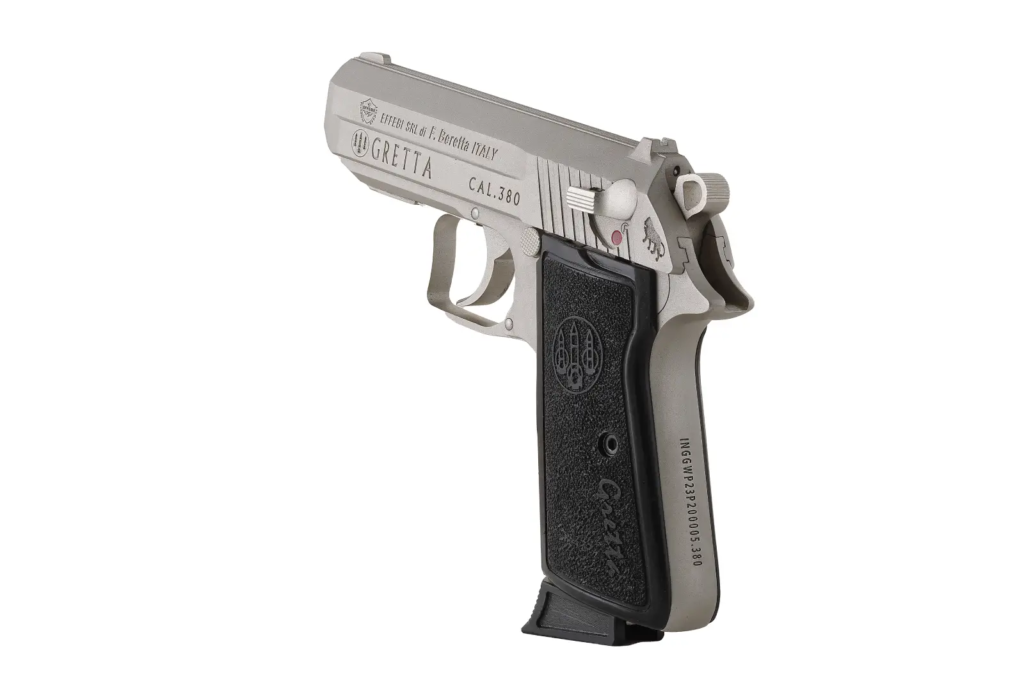
.38 Dominator
5. Sights and Optics
The sights on a pistol play a critical role in aiming accuracy. Consider these factors:
- Iron Sights: Traditional sights come in various configurations (e.g., fixed, adjustable) and can be upgraded for better visibility and precision.
- Red Dot Sights: Increasingly popular for their quick target acquisition and aiming precision, especially in low-light conditions or rapid-fire situations.
Example: For shooters focusing on precision and quick target acquisition, pistols with adjustable iron sights like the Glock 17 Gen5 MOS, offering versatility and ease of adjustment, may be preferred. Alternatively, for those seeking enhanced aiming capabilities and rapid target acquisition, pistols with integrated red dot sights like the SIG Sauer P320 RX, known for its reliability and optical sight compatibility out of the box, could provide a competitive edge.
6. Budget Considerations For Choosing Pistol
Set a realistic budget that balances your desired features and quality. Remember to account for additional costs such as ammunition, accessories, and training.
Example: For budget-conscious shooters looking for a reliable and affordable option, pistols like the Gretta .38 Dominator, appreciated for its affordability and robust performance, offer excellent value without compromising on quality. Alternatively, for those with a higher budget seeking premium features and craftsmanship, pistols like the Wilson Combat EDC X9, celebrated for its custom-grade enhancements and superior build quality, may be worth the investment.
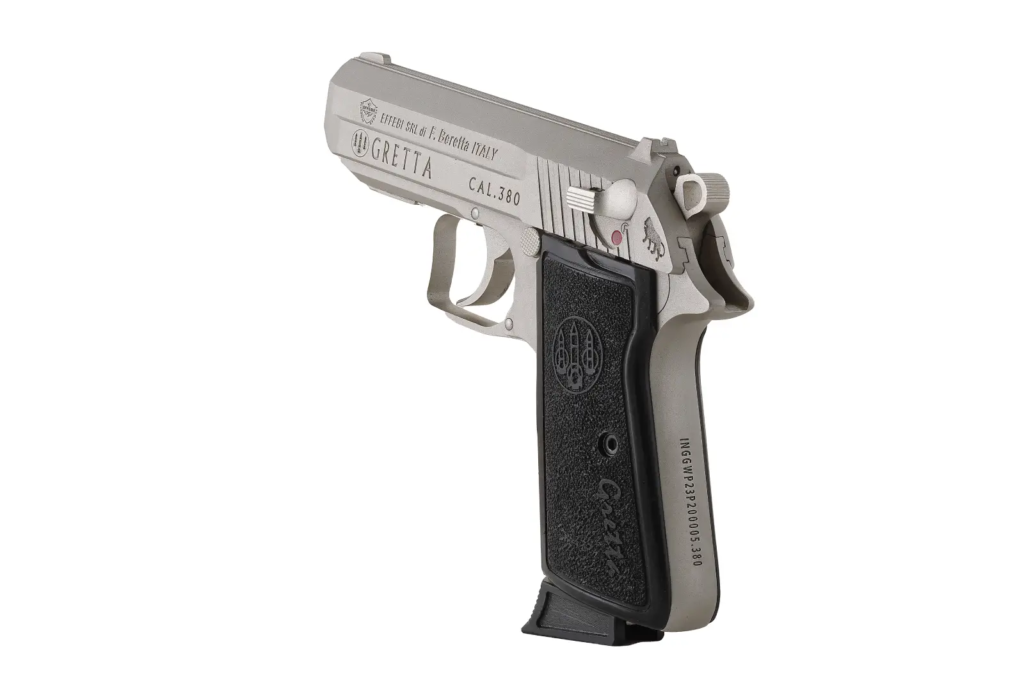
7. Legal and Regulatory Compliance
Familiarize yourself with local laws and regulations regarding pistol ownership, concealed carry permits, storage requirements, and any restrictions on specific features or modifications.
Example: Before purchasing a pistol, ensure you understand and comply with local laws and regulations. Seek guidance from legal authorities or firearms experts to ensure lawful ownership and use.
Conclusion
Choosing the right pistol involves careful consideration of factors such as pistol type, intended use, ergonomics, caliber, sights, budget, and legal considerations. By understanding these aspects and conducting thorough research, you can confidently select a pistol that meets your needs for self-defense, sport shooting, or recreational use. Remember to prioritize safety, training, and responsible ownership to enhance your shooting experience and proficiency.
This comprehensive guide equips you with the knowledge and considerations necessary to make an informed decision when choosing a pistol. Whether you’re a novice shooter or an experienced enthusiast, understanding these factors ensures you find a pistol that fits your preferences, enhances your shooting skills, and meets your specific needs effectively.




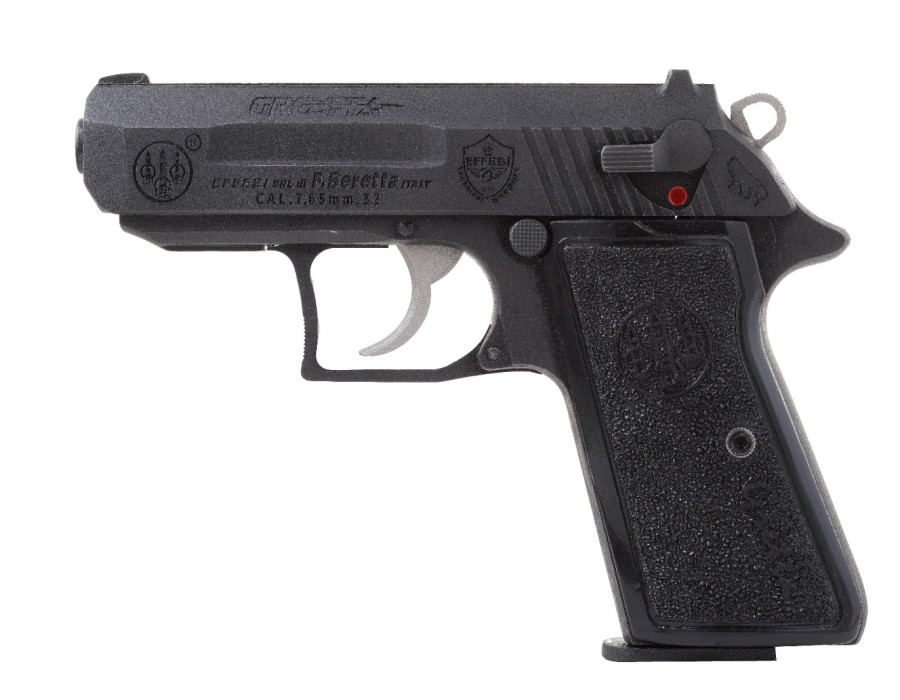
Comments